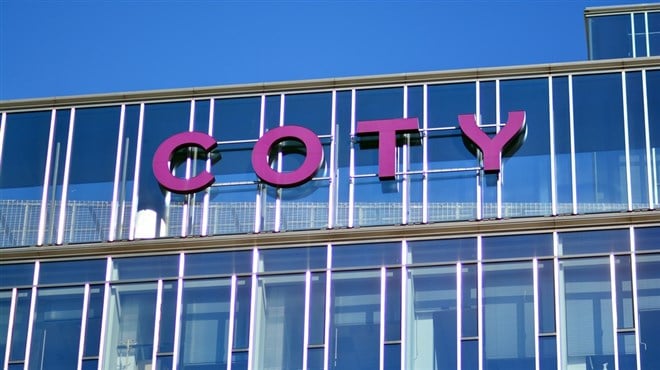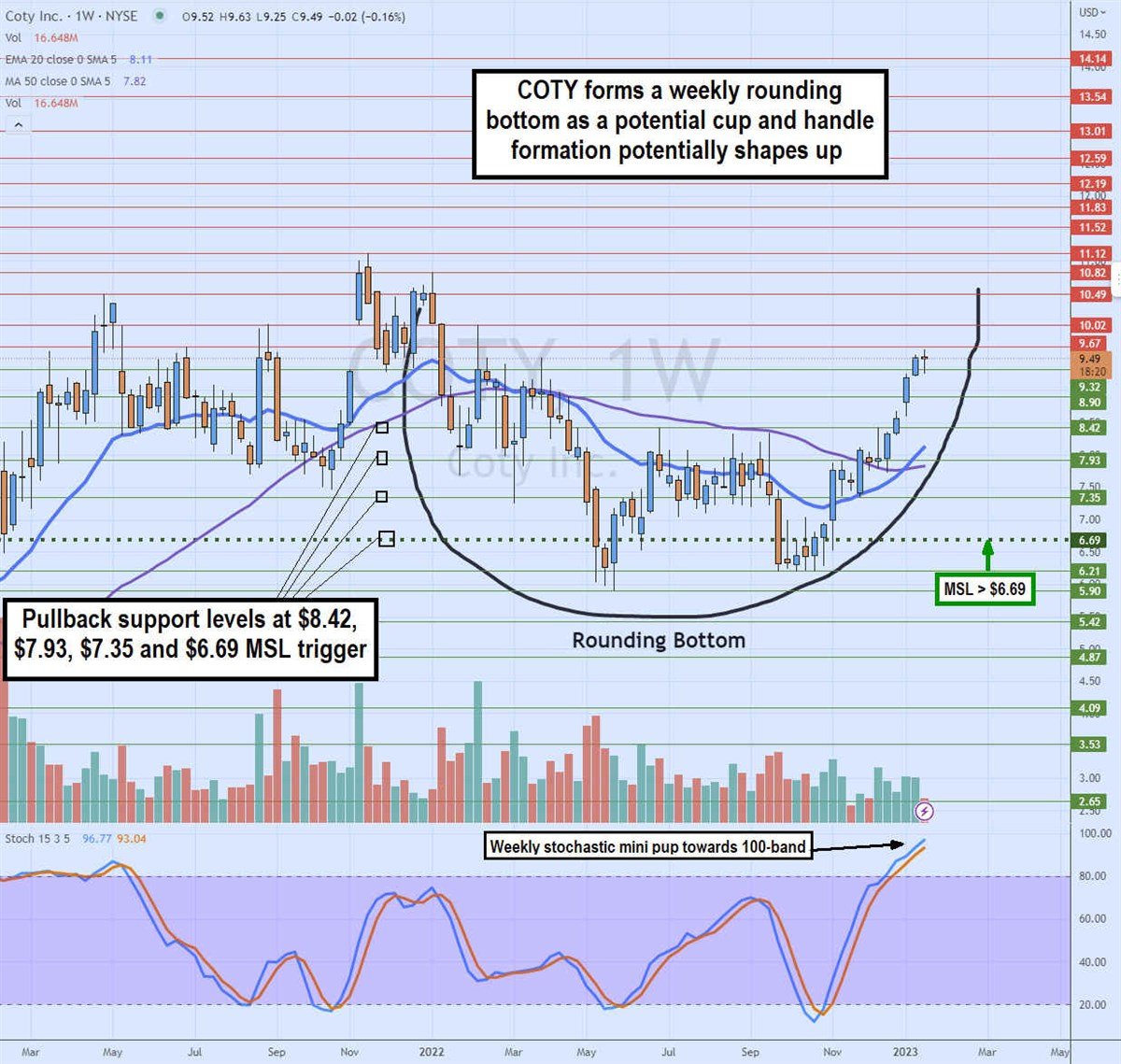
The stock of multinational beauty products company Coty, Inc. (NYSE: COTY) has recovered since peaking in November 2021. The Company produces and markets personal care products from some of the most well-known brands in the industry, including Calvin Klein, Sally Hansen, CoverGirl, OPI, and Rimmel.
Their products tend to sell at a premium compared to competitors e.l.f. Beauty Inc. (NYSE: ELF) sells at department stores like Macy’s Inc. (NYSE: M) and Nordstrom Inc. (NYSE: JWN). They also have a professional and luxury line comprising Wella, ghd, and the Clairol brand. Skincare has consistently been a strong category even throughout the pandemic.
Unlike retail brands like Lululemon Athletica Inc. (NASDAQ: LULU) reporting margin compression, Coty experienced margin expansion while raising prices with no adverse effect on volume, indicating elasticity with its products. The reopening has caused make-up and fragrances to recover as people returned to engaging in person, during travel, and in the office. Travel retail momentum helped spark 11% to 12% like-for-like (LFL) growth in EMEA and Asia Pacific regions.
Substantial Prestige and Consumer Beauty Segment
While Coty licenses the brands, it recently sold the fragrance license back to the French brand Lacoste. The Company continues to see strong demand in its Prestige and Consumer Beauty segments, contributing to supply chain challenges. Its Lancaster skin care sales saw a 400% YoY growth in China.
Component shortages are its prime limitation for near-term growth. Its exit from the Russian market is also expected to negatively impact sales by (-2%). A strong U.S. dollar is also expected to have a (-6%) to (-8%) impact, as reported on its Nov. 8, 2022, fiscal Q1 earnings release. However, Coty states that it hasn't seen any volume drop since implementing low-to-mid single-digit price hikes.
Steady as She Goes
On November 8, 2022, Coty released its fiscal first-quarter 2022 results for September 2022. The Company reported an adjusted earnings-per-share (EPS) of $0.11, excluding non-recurring items matching consensus analyst estimates for a profit of $0.11. Revenues rose 1.4% year-over-year (YOY) to $1.39 billion, beating analyst estimates for $1.38 billion. Despite inflationary pressures, Coty could still generate solid gross margins expanding 70 bps to 63.9% YoY.
Upbeat CEO
Coty CEO Sue Nabi commented, While Coty has benefited from a resilient beauty category, I am particularly pleased that our balanced growth strategy remains in full force. We delivered robust growth across our regions and key categories, including fragrances, cosmetics, skincare and body care, and both divisions.
This has allowed us to again report sales growth well above the underlying beauty market and among the best in our competitive set.” They continue to build out their footprint across three Prestige fragrance brands, including Gucci, Burberry, and Kylie Cosmetics. Its skincare growth was driven by 20% YoY growth in Lancaster sales.
China saw sales return to LFL growth despite the lockdowns. This should improve even more as they lift its zero-COVID restrictions.
Reaffirms Guidance
Coty sees fiscal full-year 2023 EPS between $0.32 to $0.33 versus $0.32 analyst estimates. The Company sees strong demand across all its markets, especially in the Prestige fragrances and Consumer Beauty segments.
Analyst Upgrade
On Jan. 3, 2023, Piper Sandler upgraded their rating on shares of Coty to Overweight from Neutral, raising its target price to $10 from $8. Analyst Korine Wolfmeyer suggests that its high exposure to travel retail and China gives it the edge to outpace competitors. Its diversified product portfolio makes a good recession hedge for consumer trading in a weak economic climate.
The Marketbeat MarketRank™ Forecast gives Coty shares a 2 out of 5-star rating with a 4.8% upside price target and 21.88% projected earnings growth. Insiders also purchased $761,000 of stock in the last quarter.

Weekly Rounding Bottom to Potential Cup-and-Handle
COTY stock has formed a rounding bottom as it recovers towards the lip of the potential cup-and-handle near $10.49. This journey has taken just over a year. The weekly market structure low (MSL) was triggered on the $6.69 breakout as the weekly stochastic started to climb back up through the 20-band.
The weekly 20-period exponential moving average (EMA) support sits at $8.11 as it crossed up through the 50-period MA at $7.82. The weekly stochastic made a complete oscillation through the 80-band and is trying to mini-pup towards the 100-band. Shares are overbought at these levels and need a breather.
Watch for a peak near the lip and a pullback to form a handle. The cup and handle pattern forms when shares bounce back up through the lip level forming the handle extension. Keep an eye on the pullback support levels at $8.42, $7.93, $7.35, and the $6.69 weekly MSL trigger.












